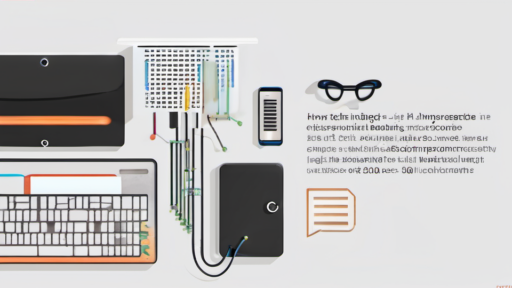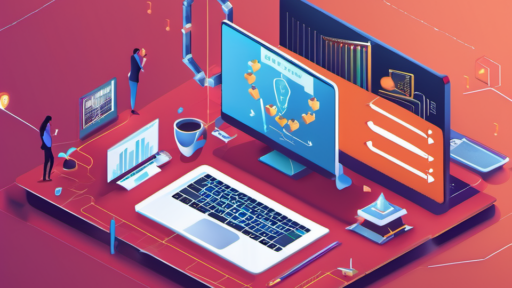Imagine waking up to the horrifying realization that your company’s confidential data has been stolen. Your heart pounds, your palms sweat, and your mind races with the devastating consequences. The unthinkable has happened: your data is breached, leaving you vulnerable and exposed. But before you surrender to despair, understand this: you are not alone.
Data breaches are a global pandemic, a silent epidemic infecting businesses across every industry. But what if we told you that you can rise above the chaos and build a fortress of data security? What if we equipped you with the knowledge to proactively protect your digital assets and respond with confidence if disaster strikes? Prepare yourself for a journey into the world of data security, where we’ll equip you with the tools, knowledge, and strategies to conquer this silent threat.
Data Breach Prevention: The First Line of Defense
Think of your company’s data like a precious diamond – brilliant, valuable, and easily stolen if not protected. Your first line of defense against a data breach is preventing the intrusion altogether. We can do this by taking a proactive approach, utilizing multi-layered security strategies and staying vigilant in a constantly evolving threat landscape.
Bolstering Your Data Fort
- Implementing strong passwords and multi-factor authentication: You know the drill – passwords should be strong, unique, and never shared. Go beyond simple passwords and add multi-factor authentication (MFA) to your login process, adding a crucial layer of protection that demands extra verification, like a code sent to your phone or a biometric scan.
- Educating your workforce: Human error is often the biggest vulnerability. This means arming your team with cybersecurity awareness training, emphasizing best practices like recognizing phishing emails, reporting suspicious activity, and avoiding unsecured networks.
- Regularly updating software and security patches: Cybercriminals thrive on weaknesses, targeting outdated software and systems. This makes staying current with software updates and security patches a must-do. Automation tools can help manage these updates, ensuring you’re always patched and ready to counter new threats.
Data Loss Prevention (DLP): Guarding Your Secrets
Data Loss Prevention (DLP) acts as your internal security guard, protecting sensitive information as it leaves the organization. It works like this:
- Identifies: DLP scans and analyzes data to spot sensitive content. Think about personally identifiable information (PII), customer data, financial records, and intellectual property – these are the gems we want to safeguard.
- Monitors: DLP systems constantly monitor your systems and networks, looking for suspicious patterns and risky activities.
- Controls: It takes action, stopping data leaks by blocking or encrypting transmissions, sending alerts, and providing detailed audit trails.
The Aftershock: Responding to Data Breaches
Even with the best security measures, the possibility of a breach still exists. Think of it as a fire drill; you must be prepared for the inevitable.
Data Breach Response: Quick Action, Damage Control
- Contain the Breach: Speed is critical. Your team must act quickly to isolate the affected systems to prevent further damage and prevent the breach from spreading like wildfire.
- Investigate and Analyze: This stage requires a deep forensic analysis to determine the source of the attack, identify the stolen data, and understand the extent of the breach. This data is crucial for determining the impact and informing the next steps.
- Notify Stakeholders: Transparency is vital. Immediately notify all impacted parties, including your clients, business partners, and government agencies. Be upfront, provide clear information, and offer steps for affected individuals to mitigate potential harm.
- Recovery and Mitigation: This involves restoring affected systems to their pre-breach state, implementing additional security measures, and offering credit monitoring and identity theft protection to victims. This also includes communicating proactively and transparently with stakeholders to rebuild trust and manage the impact of the breach.
Building a Data Security Culture
Strong security doesn’t just exist in software, it exists within your people and the overall culture of your organization.
A Mindset of Security
Data security isn’t a task delegated to the IT department alone. It requires continuous education, clear communication, and active participation from every employee. The goal? A company culture that actively promotes data security and responsibility, understanding that every person plays a crucial role in protecting the organization.
Continuous Security Improvement
Security is a journey, not a destination. Data breaches evolve and become more sophisticated, so it’s essential to constantly improve your security posture.
- Regular Vulnerability Assessments: Perform regular security scans and penetration testing to identify vulnerabilities, identify weaknesses, and ensure that your defenses are still effective against new and evolving threats.
- Cybersecurity Training & Awareness: Continuously educate your employees with ongoing cybersecurity training and awareness programs, including real-life examples, interactive scenarios, and clear policies and guidelines. This fosters a proactive culture where everyone is mindful of data security risks.
- Incident Response Planning: Test and refine your incident response plan regularly. Conduct simulation exercises to test your team’s abilities and refine the plan. Ensure the plan is accessible, understood by all team members, and aligned with your current security practices.
The Takeaway: Security is a Journey, Not a Destination
The landscape of cyber threats is dynamic and unpredictable. Data breaches, unfortunately, are a reality for companies of all sizes, no matter how robust their security.
Remember, this is not about fear, but about empowerment. Armed with knowledge and a proactive approach, you can rise to the challenge, secure your data, and build a fortress that withstands even the fiercest digital storm.
Key Takeaways:
- Data breach prevention is paramount; it requires multi-layered security, proactive strategies, and a strong cybersecurity culture.
- Investing in Data Loss Prevention (DLP) is crucial to protect sensitive information from leaking outside your organization.
- Prepare for the worst by creating and regularly testing your incident response plan to mitigate the impact of a breach.
- Foster a culture of cybersecurity by continuously educating and training employees, instilling a mindset of vigilance and security awareness.
- Continuous improvement through vulnerability assessments, cybersecurity training, and updated incident response plans are key to building a robust security framework.
Embrace data security, not as a burden, but as a competitive advantage. Let your organization be the digital lighthouse, leading the way to a safer, more secure online world.






